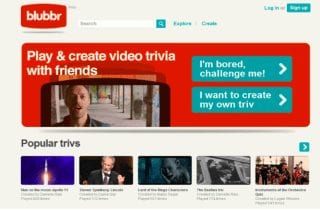Where better to explore ecological interdependence, growth and development of organisms, structure and function, adaptation, and the environmental impact of human activity than in an outdoor garden classroom? In this edWeb webinar Whitney Cohen, Education Director at Life Lab and lecturer at UC Santa Cruz, let attendees know how to use a garden as a meaningful context in which students can engage in next generation science and engineering practices.
Over the past year there has been a growing body of evidence that the popular game Minecraft is a powerful learning tool that can revolutionize the way we teach. Many teachers and schools want to try it but do not know how. With this in mind we welcome you to Mathcraft, a program created by teacher and curriculum writer Jim Pike, 5th grade teacher at Albert Einstein Academy of Beverly Hills, as a way to engage his students in the understanding of and performance on Common Core Math. In this webinar Jim demonstrated how to turn Minecraft buildings into algebraic equations, how to build algorithms for standardized test questions in the game itself, and more.
In this edWeb webinar hosted by the Digital Learning community, Jeff Mao and Steve Garton, leaders of the Maine Learning Technology Initiative program, explored the increasingly diverse technology landscape to help educators make good decisions about devices, software, and digital content. Attendees learned how Graphite.org can help them find the next great learning app.
As schools receive the results on their new assessments, new and surprising gaps are emerging. Kevin Baird, Chairman at the nonprofit Center for College & Career Readiness, revealed the latest assessment data, uncovering the new priority skill gaps grade by grade, in ELA and Mathematics.
Teachers wanting to “flip” their classrooms are faced with a dilemma: how can they make students accountable for what they are learning? In this edWeb webinar from the Tech Tools for the Classroom community, middle school assistant principal Shannon Holden showed educators how to use blubbr.tv to make class materials interactive for their students.
We can embrace change and harness its power, or resist it and be pushed to the margins. Using the backdrop of great new maker tools, PhD physicist Steve Kurti explored the need for leveraging the great features of new technology to find a timeless treasure: independent learning. Steve also investigated how maker education and makerspaces can supercharge run-of-the-mill projects by considering that any good teacher can create an environment for exploration.
In this interactive edWeb webinar, Dr. Marialice B.F.X. Curran, Associate Professor at the University of Saint Joseph, provided examples of how to get more student voice involved in digital citizenship project-based learning (PBL) throughout the school year.
In this edWeb webinar, the first of a four-part series, Dr. Sara Delano Moore, Director of Mathematics and Science at ETA hand2mind, shared a developmental progression for geometric reasoning as well as strategies for laying a strong foundation. Sara also explored ways to develop student understanding of shapes and attributes.
Presenter, Ryan Schaaf, Assistant Professor of Technology at Notre Dame of Maryland University, discussed integrating a wide range of digital games, including those utilizing the Common Core, into the curriculum. He also explored the instructional strategies essential to making a digital game-based learning experience a success for students. Meaningful assessment processes such as product and process rubrics, as well as self and/or peer evaluation practices for digital game-based learning experiences, were determined.
Due to the changing role of the teacher in the 21st century, educators are not seen by students and parents as “The Keeper of All Knowledge.” This is among the factors impacting the level of respect teachers receive from students and their parents. In this edWeb webinar from the New Teach Help community, middle school assistant principal Shannon Holden showed novices how to earn respect in the classroom.











